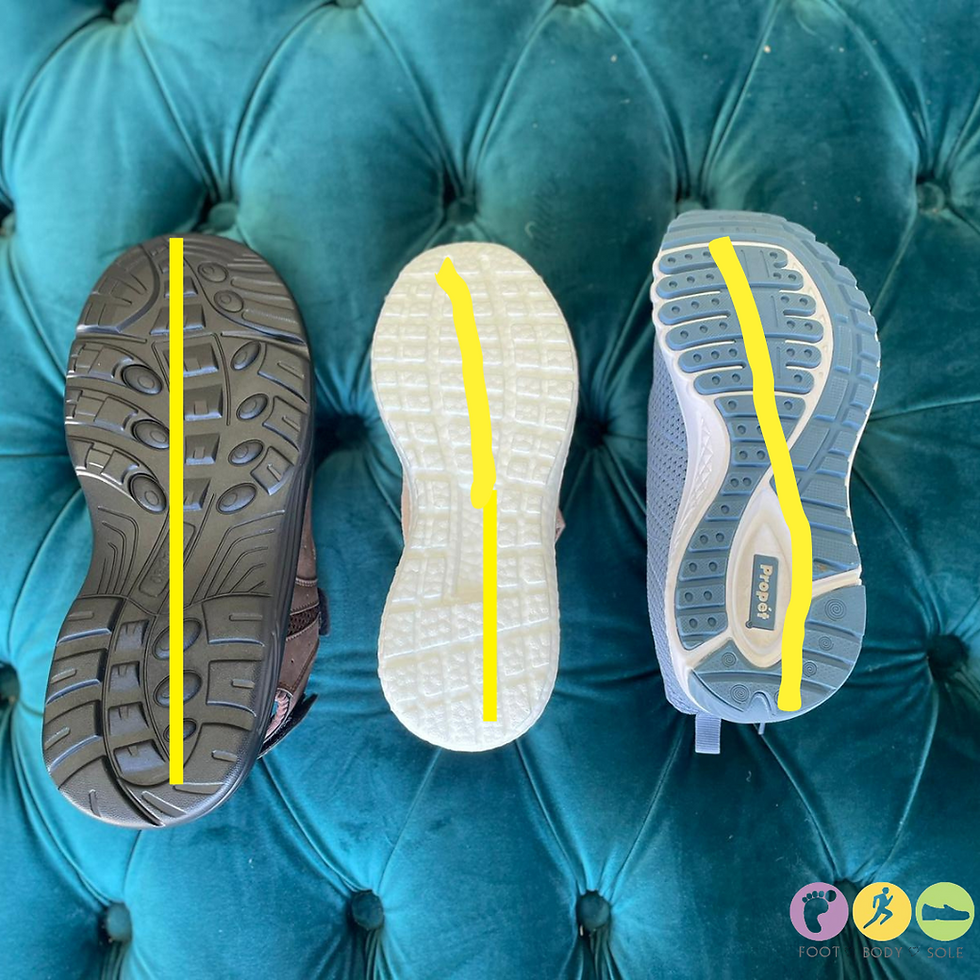Limb length discrepancies (lld) - It's common but when do we need to treat it?
- Foot Body Sole
- Sep 27, 2021
- 2 min read
Updated: Oct 1, 2021
Lower limb length discrepancy (LLD) is when there is a difference between the lengths of both legs. Although almost 50% of people have a split difference between the length of their legs, it is when the number is greater than 2cm where it may cause some issues.
This discrepancy may be something that is developed from birth and is genetic, or may be something throughout one’s life, whether it be via injury or illness. In these cases, a variety of studies have highlighted that those who were born with LLD are able to cope and deal with the subsequent side effects much better than those who have been induced with it through trauma.

Associated symptoms include:
Decreased stance time and stride length in the shorter leg
Decreased walking velocity, increased walking cadence.
Lower back pain due to scoliosis from lower spine compensation
Hip pain from favouring one side of the hip due to leg length difference
Foot pain due to excessive pronation on the longer leg or lateral border of the foot on the shorter leg
Painful callus or corns associated with extra loading through gait
Ways we can diagnose:
The best way to test if you have a LLD, is by getting your lower limb length measured by a specialist, i.e. podiatrist, physiotherapist etc. This will be done by using a tape measure between 2 defined points. Two common points are the anterior iliac spine and the medial malleolus (the bump on the inside of your ankle :) ) or the umbilicus and medial malleolus.
Another way of assessing this is via a gait analysis performed by your podiatrist. Young children may compensate for a lower limb length discrepancy by flexing their knee or walking on their toes
Ways we can help as Podiatrists:
Provide heel lifts/device to ensure minimum compensation from opposite leg

Educate for potential risk factors associated with the discrepancy
Provide a necessary strength and stretching program
Application of offloading techniques- including taping, padding
Footwear education regarding suitable runners, sneakers and work shoes/boots
Liase for footwear modifications in certain cases
Discuss further treatment options depending on severity of LLD

Image credit to footlabs.co.uk
So, when do we need to treat?
In most cases, when it causes you pain or resulting in extra compensation in other areas of the body which over time will make your gait worse.
As podiatrists we often intervene when the following situations are diagnosed:
If the LLD is causing hip pain, then over time it can cause pain in one side of the hip and cause earlier onset of Arthritis.
Causing painful or worsening scoliosis
Foot pain related to excessive pronation of the longer leg during gait and we can issue orthotics to support the flattening arch of the affected foot, also assist to balance out the shorter leg by adding heel lifts to an orthotic to balance the body out.
If you think you may have a LLD or ongoing Lower back, knee pain or foot pain, we would love to help you by offering an one on one Biomechanical assessment at our clinic.
Call us on (03) 8648 7678









Comments